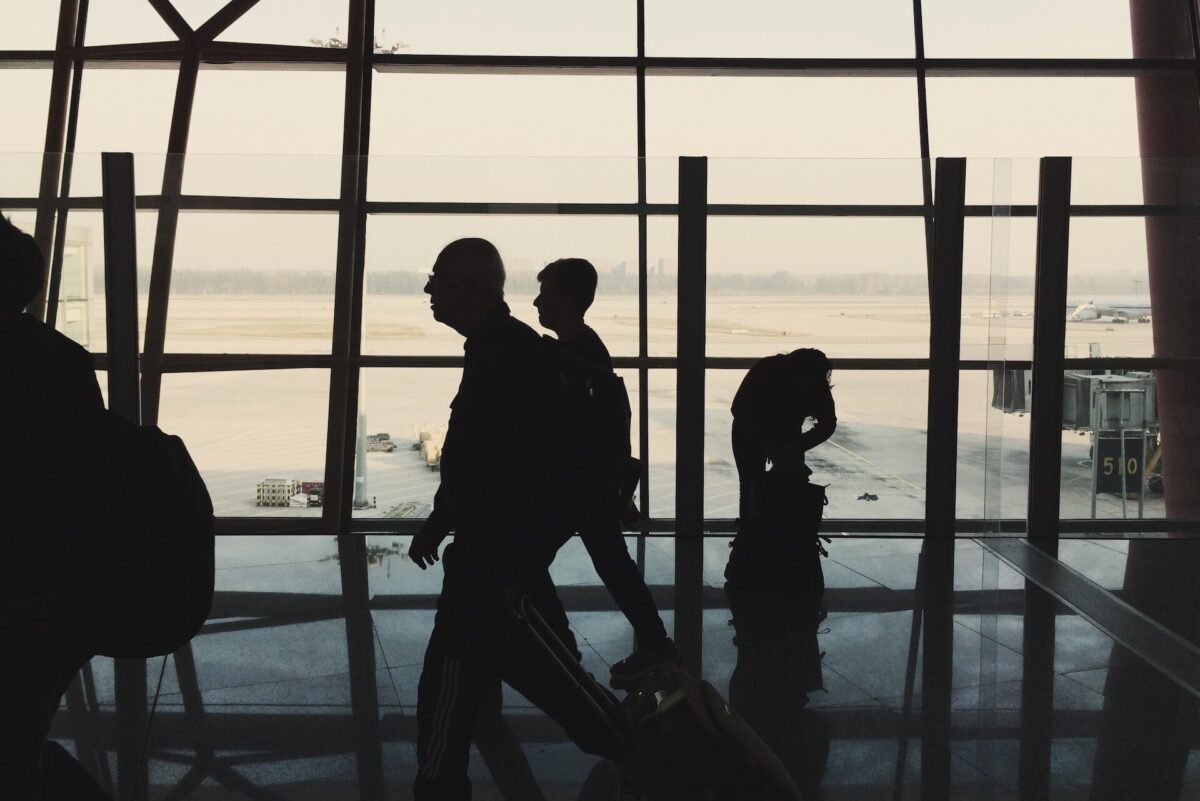The Reinvention of Allegiant Air
Skift Take
Allegiant is not an airline. No, says its management. Allegiant is a travel company.
Whatever the appropriate label, Allegiant is phenomenally successful, sporting one of the airline industry’s most unique business models. Many aspects of that business model — direct distribution, heavy reliance on ancillary revenues, highly variable flight scheduling by season and day of week — are here to stay. But as management made clear at an investor day event last month, Allegiant is also changing in many ways.
One of the most visible changes: The airline’s fleet. Allegiant for much of its existence was almost synonymous with MD-80s. The old planes worked perfectly for its model. Most importantly, they were cheap. No monthly lease payments. No monthly mortgage payments. Just fly the aging planes when demand merited. But nothing lasts forever. At a point, the old workhorses were becoming too difficult to maintain, with spare parts harder and harder to find.
So Allegiant, as early as 2012, began acquiring used A319s and A320s. At the time, their secondhand values were dropping as airlines around the world ordered A320 NEOs. The carrier did its first-ever deal in 2016 for newly manufactured aircraft, ordering 12 A320s directly from Airbus.
It quickly became clear that the Airbus planes would work well for Allegiant. Yes, they were more expensive than the MD-80s. But they were vastly more fuel efficient. They could fly longer missions, meaning new route opportunities. They had more seats. They were capable of much higher rates of utilization during peak periods and periods of low fuel prices. And most importantly, they were much more reliable. Fewer cancellations. Fewer delays. Lower disruption costs. Higher customer satisfaction. The benefits of Airbus flying were many.
The benefits though, weren’t immediately realized. Transitioning from the MD-80 to an all-Airbus fleet wasn’t easy. It created a new set of operational complexities and costs. Labor costs, for example, spiked as the airline had lots of pilots in training. During the first three quarters of 2017, Allegiant cancelled more than 900 flights, mostly due to maintenance, which cost the company $36 million. More than 2 percent of all customers during the period were affected by irregular operations. The general sentiment was that people flew Allegiant because it was cheap. Not because it was good.
That’s changing though, following a big milestone a year ago last month. It was last November that Allegiant retired its last MD-80, finally bringing to realization the longtime goal of flying only A319s and A320s. Sure enough, disruption costs are down sharply this year, while customer satisfaction metrics are way up. To be clear, it likes the 186-seat A320s better than the 156-seat A319s. It therefore doesn’t plan to add any A319s. Unless that is, it encounters an overwhelmingly attractive price. Indeed, when Allegiant says it’s not just an airline, it’s in one sense reminding investors that it’s also a shrewd aircraft trader, hunting for bargains throughout the world. One recent deal involved four A320s that were flying with Avianca Brasil.
Surging Profits
Profit margins this year are surging, in part thanks to the completion of the fleet transition and the better economics, reliability, and customer service it enabled. One important benefit is that the airline is driving a lot of capacity growth through better aircraft utilization. Think about it: With fewer cancellations, it doesn’t need nearly as many spare aircraft. And so, during the first half of 2019, Allegiant’s operating margin topped 20 percent. In the third quarter, operating margin jumped from 7 percent a year ago to 17 percent.
Hotels, Anyone?
Higher margins have boosted Allegiant’s stock price this year, by more than 60 percent since the start of January. A higher stock price, though, is also a sign that investors are becoming more comfortable with Allegiant’s unorthodox plan to build a large hotel near Punta Gorda airport, situated on Florida’s Gulf coast between Fort Myers and Sarasota. One reason it’s doing so: because hotel prices in the area are “incredibly expensive,” especially during peak season.
What’s more, Allegiant’s hotel, branded with the name Sunseeker, will, like its airline, depend entirely on direct marketing and distribution. Online travel agencies like Expedia, it said, won’t take 20 points of margin right off the top. No need to license a brand name like Hilton, saving another eight points or so. “For 18 years, we have sold people airplane seats without a third party. So frankly, selling a seat in a hotel, so to speak, is going to be a walk in the park for us,” said chairman and CEO Maurice Gallagher.
Selling hotel rooms for third parties has long been a staple of its business model, and often a highly profitable one. In that respect, it acts almost like an online travel agent itself — again, more than just an airline. By avoiding online travel agents (OTAs), it saves an estimated $6 to $8 per booking. But getting people to come directly to the Allegiant website, mobile app, or call center isn’t free. It in fact spends more per passenger on advertising than any other U.S. airline. Still marketing via television, radio, and billboards costs only about $3.30 per booking. In addition, about a quarter of visitors to Allegiant.com arrive via referral, which often means Google. The airline even buys banner ads on Expedia, never mind that you can’t book an Allegiant flight on Expedia. Those referrals and banner ads actually carry costs similar to an OTA booking fee.
But all told, Allegiant spends less than $7 per passenger on all marketing and distribution, including credit card fees. That’s similar to the cost of OTA distribution, yes. But it would also have limited ability to sell ancillaries through an OTA, and no ability at all to sell hotels or rental cars — that’s their business. For comparison, Delta spends more than $20 per passenger on marketing and distribution. Only Spirit spends less than Allegiant but with virtually no advertising.
Allegiant’s advertising is highly targeted. It knows that almost half of its revenues come from “avid travelers” with high incomes. Many are corporate executives in places like Cincinnati with second homes in Florida, flying Delta for work but Allegiant for vacation. Email marketing is a major focus, and one that’s increasingly tailored to individual needs and preferences. It has a popular co-branded credit card. It’s opening family entertainment centers in markets like Michigan and Utah — these are profitable in their own right but more importantly help build the company’s marketing database and expand the universe of potential Allegiant flyers and hotel visitors.
More recently, Allegiant made a big splash by buying naming rights to the new Raiders NFL stadium opening in Las Vegas next year. It has other sports sponsorships too, and marketing deals with other big companies like Disney. But Allegiant insists that total marketing costs won’t grow next year.
Ancillaries remain critical to the Allegiant business model. This includes charter or fixed-fee flying, which should generate more than $60 million in revenue this year and next, compared to about $50 million in the previous two years. The growth comes courtesy, again, of the extra utilization the carrier can drive from its all-Airbus fleet. Last quarter, by the way, Allegiant designated just four planes as spares, compared to 12 the year before. And even as it shrank from 92 total planes to just 85, ASM capacity increased 13 percent.
Just as more flying means more ancillaries, so do higher passenger volumes. To that end, a new pricing engine aims for higher load factors. Allegiant is also introducing new products, including bundled fare options rolled out systemwide last month. It’s now testing flight passes (multiple future journeys for an upfront price) in the Nashville and Cincinnati markets. Another product under evaluation is extra-legroom seating, which is predictably doing well on longer-haul flights. Planes can convert to and from the new seating configurations overnight, without any subtraction from utilization time.
How about Allegiant’s network? Are there still growth opportunities? Many, management insists, even after announcing more than 100 new routes since the start of 2018. The carrier continues to find additional small markets to add, including Traverse City, Michigan, and State College, Pennsylvania. Next quarter, according to Cirium schedule data, Punta Gorda will see seat capacity up 31 percent year-over-year. The airport will in fact be the airline’s second busiest during the first quarter, behind only Orlando Sanford, itself growing 9 percent. St. Petersburg near Tampa, its third busiest airport, will see 15 percent growth. Sarasota is new to its Florida menu. So is West Palm Beach. Mesa airport near Phoenix has become one of Allegiant’s top five destination markets. Another fast growing market is Nashville, which is developing into both an origin and destination market.
Subscribe to Skift Airline Weekly
Allegiant’s hometown Las Vegas remains important to the network, and one of its Big Five leisure destinations (with Orlando, Punta Gorda, St. Petersburg, and Phoenix Mesa). But it’s less important to the network than it once was. Las Vegas available seat miles in 2012 were about 33 percent of Allegiant’s total. Now they’re just 16 percent. A more diversified network, alas, is a more defensible network. Then again, most of Allegiant’s routes are still served only by itself. And that’s true even as it enters larger markets — a decade ago, 61 percent of its passengers originated in what it deems small markets; now the figure is 39 percent.
Two new routes Allegiant is doing from Las Vegas though, are to Phoenix Mesa and Los Angeles LAX. Never mind that Southwest offers huge frequency advantages on Vegas routes to Los Angeles and Phoenix. For Allegiant, it’s simply a matter of getting more flying time out of its planes. Here again is a theme that came up again and again at the investor day event: The benefits of greater aircraft utilization, thanks to the all-Airbus fleet and the greatly superior operational reliability it’s enabling.
Interestingly, Allegiant sees itself as a sort of Southwest for a new generation; just as young people turned to Southwest in the 1980s and 1990s, the carrier sees budget-conscious millennials turning to Allegiant for low-fare travel. With so much Florida flying, it’s of course well-positioned to serve the affluent baby boomer generation too.
Data Science Matters
What else is Allegiant working on? It’s most definitely a proponent of data science, crunching numbers to improve everything from its pricing to its marketing to its maintenance. It aims to eliminate 23,000 customer service calls a month by adding functionality to its mobile apps. It’s establishing new crew and aircraft bases in smaller cities, which entail some labor inefficiencies but improve operations and open new route and charter flying opportunities (its newest bases will be in Nashville, Allentown, and Des Moines). It’s altering its pricing strategy to encourage more round-trip flying. It’s developing alternative payment options. The idea behind the hotel, keep in mind, is to win “more spend out of a customer’s pocket.” The idea behind big marketing campaigns like the Raiders stadium name is to attract more customers.
Labor relations are stabilizing too. The airline recently settled a legal dispute with its pilot union over crew scheduling practices. It removes the threat of strikes in the run-up to 2021, when Allegiant’s pilot contract becomes amendable.
Allegiant next year plans to grow available seat miles capacity another 10 percent to 12 percent. It also hopes to generate $342 million in improved earnings from its various management initiatives, led by cost savings, most importantly from fuel. The cost savings represent about 40 percent of the earnings improvement goal. The other 60 percent? This includes revenue gains from its credit card, e-commerce initiatives, a new pricing engine, more fixed flying, more 186-seat A320s, and — here it is again — greater fleet utilization.
All of this could make one of the industry’s most profitable airlines more profitable still. It wants to be known, moreover, not just as more profitable but also more reliable. It wants to be known not just for low fares but also good service. And, indeed, for being more than just an airline.
This story was originally published in the December 2 edition of Skift Airline Weekly.





